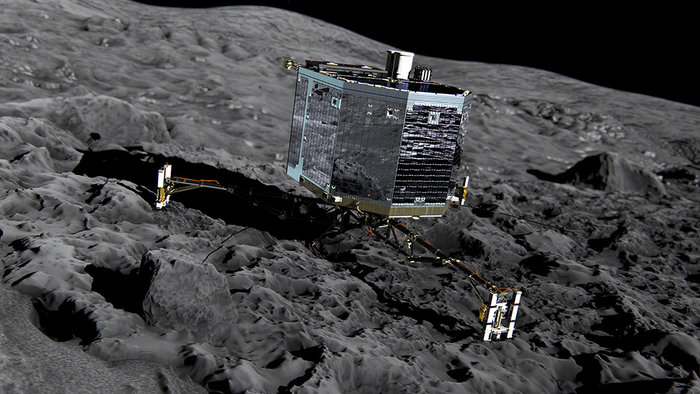Problem Plagues Rosetta/Philae Comet Mission
November 14, 2014
Yesterday, the robot probe Philae began sending back the first images ever taken from the fractured terrain of a comet. After an awkward landing in which the probe bounced twice, initially back out into space, it stabilized on Comet 67P. It is currently attempting to drill into the surface of the comet. European Space Agency (ESA) scientists hope the tool will be able to capture some samples for analysis in Philae’s on-board laboratories.

An artist’s impression of the probe Philae (front view) on the surface of Comet 67P. (ESA/ATG medialab)
The objective of this ESA mission is to explore the origins of our solar system. Comets are believed to hold materials that are largely unchanged since the formation of the planets 4.6 billion years ago. Scientists speculate that comets delivered water to the early Earth. Others theorize that comets could even have “seeded” Earth with the chemicals needed to start life on the planet.
From the pictures Philae has returned to Earth, the ESA scientists believe it landed in the shadow of a cliff, meaning that the sunlight the probe receives is limited. As a result, its solar panels probably will not keep the battery systems properly charged, cutting short the run of the mission.
ESA’s Rosetta satellite, with its piggybacked Philae lander, was launched in 2004. The pair traveled 4 billion miles (6.4 billion kilometers) to reach Comet 67P, out near the orbit of Jupiter. After a long period of maneuvering into the correct position, Rosetta dropped Philae onto to Comet 67P on November 12.
Additional World Book articles:
For additional information about the Rosetta missions, see: http://rosetta.esa.int/


